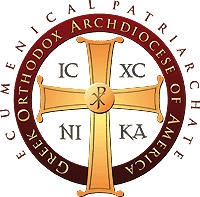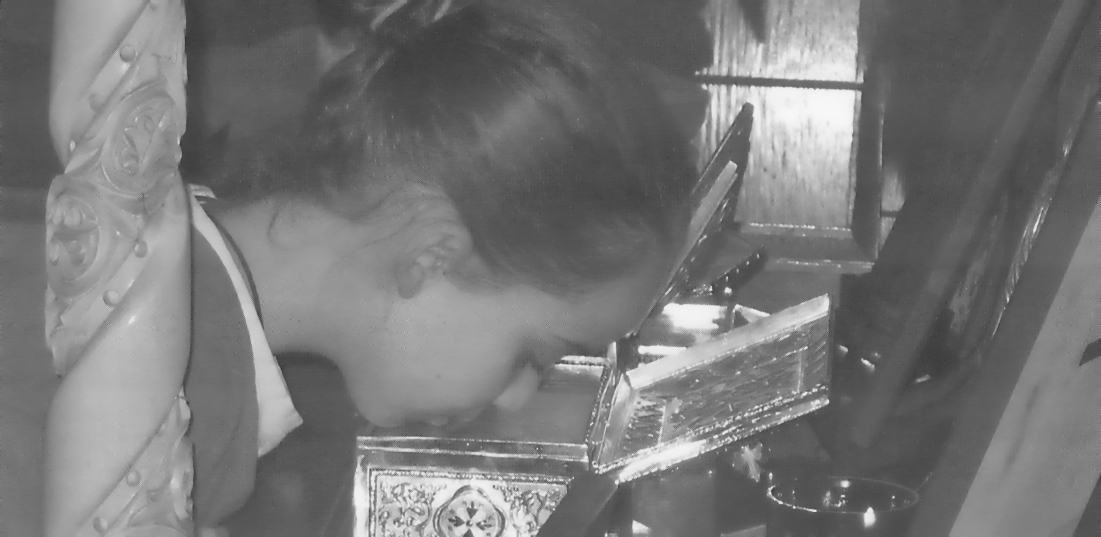 |
|
|
PRAXIS |
|
 |
|
|
Despite the best efforts of parents and teachers, there is a depressing litany of reasons why people brought up as Christians later abandon their faith. It is alleged, for instance, that it is primitive and superstitious. Or, conversely, that it is too 'spiritualized'; it devalues material creation, and so contributes directly to our disastrous abuse of the world around us. Or that it is drearily moralistic, lacking the spiritual depth and power supposedly found in New Age sects or Eastern religions. |
 |
How does the veneration of relics fit into this picture? We may think of it as something that has to be explained very carefully to avoid charges of superstition. But perhaps less obviously, relics also help us explain the Christian faith in a way that explodes the other two myths as well. |
|
|
|
|
The remarkable insights that relics can provide may be summarized under three headings: the true nature of holiness; holiness and material creation; the value of our bodies. On all counts, these insights present a dramatic challenge to the uninspiring nursery Christianity which too many people grow up mistaking for the real thing. |
|
|
THE TRUE NATURE OF HOLINESS |
|
| When we think of our relationship with the saints, we often think of them as examples, heroes, models for our lives. This is not untrue, nor is it trivial. But it does not capture the essence of sanctity or fully explain its importance to us. After all, many people of other religions or none provide us with truly inspiring and humbling examples. They may embody the whole range of human virtues; including sacrificial love. To recognize someone as holy is to affirm something more than their fine character and deeds, or even their depth of faith and prayer: it is to recognize that here is a human being become transparent to God. We might not always be very aware of this when we read or hear a saint's life. When we stand before his or her relics, however, we are confronted with this reality in the most immediate way. Here we see nothing of the saint's deeds or words or teachings. We see only a mortal creature like us, of flesh and blood and bone: and this 'earthen vessel' has become a vessel of the Holy Spirit. Sanctity has no other meaning; relics have no other rationale. The saints during their earthly lives were filled with the Holy Spirit,' writes St John of Damascus; 'and when they fulfill their course, the grace of the Holy Spirit does not depart from their souls or their bodies in the tombs...' The essence of our relationship with a person of holiness, whether living or departed, is that we are not relating simply to an individual, however impressive. We relate through them to the God who fills them, who lives in them. Through the totality of their life and death, but perhaps most starkly through their relics, the saints remind us what our calling to holiness means. Our vocation is not simply to become a 'good person,' but to become god. |
|
|
HOLINESS AND MATERIAL CREATION |
|
| St. Basil the Great strikingly described the human being as 'an animal commanded to become god.' This means that deification affects the whole of our composite nature, our 'animal' or physical aspect no less than our 'spiritual' aspect. The Holy Spirit penetrates not only our soul but our very bones - and, as holy relics often remind us, may extend outwards even to our clothing or other properties. Trying to make sense of this takes us deep into the implications of our faith and practice, implications that affect the entire cosmos. The obvious starting point for our exploration is the transfiguration of Christ, when 'His face |
 |
|
shone like the sun, and His garments became white as light' (Mt. 17:2). Here we have the same process of extension, first to the physical body, and then beyond the body to other physical things. The fact that this is possible at all teaches us something very profound about the nature of material creation. According to the insight of one of the Church's greatest theologians, St. Maximus the Confessor, the clothing resplendent with 'dazzling whiteness' reveals that the deep structure of creation, the 'essential principles' or logoi of everything that exists, are fulfilled and summed up in the Person of the Word (Logos) of God incarnate. This area of patristic thought is extremely complex, but one central point needs to be emphasized: the notion that all created things are connected to each other and to the power that created them, and the belief that all things are consequently God-friendly, are ideas that Orthodox Christians can rightfully claim as our own. These are no dangerous and seductive claims dreamed up by people touting New Age spiritualities. The 'ineffable, supernatural and divine fire' is indeed 'present in the being of everything that exists, as in a burning bush': and that fire is none other than God the Word, through whom and for whom all things were made. So matter has the potentiality to be transformed, filled with God. But this potentiality is not something static; we do not need simply to become aware of it. Rather, we have the responsibility, as 'hybrids' of matter and spirit, to manifest this potentiality and bring it to fullfilment. For the transfiguration of Christ does not only reveal His divine 'glory as of the only begotten of the Father'; it equally reveals the glory of the resurrection, of which we are all to be heirs. And it is precisely this eschatological glory that the saints are manifesting by anticipation when they 'sanctify not only their own bodies but the material objects round them.' Holy relics, be they bodies or properties of saints, provide a powerful example of material creation sanctified through the human being. But we may also see the same process at work in holy people while they are alive. There are people in every age, our own included, who live already in a transfigured world, and the Orthodox tradition is full of their stories. It is important to tell and retell these stories, especially the more recent ones which are sometimes first hand accounts. Such accounts provide a context for listening receptively to older lives of saints; thus even stories that have clearly received some embroidering will not be dismissed out of hand as pious legend, but recognized as containing a germ of truth. Well-known are the stories of St. Seraphim of Sarov radiating the light and warmth of the Holy Spirit as he spoke to Nicholas Motovilov, or sitting in his forest clearing like Adam in paradise, calmly stroking a bear. But similar stories abound, for instance, concerning Fr. Paisios, the renowned Athonite Elder who died in 1994. He had an acute sense of the presence of God in all His creation; he could speak of the grass as an icon, or pluck a leaf and give it to a visitor as a blessing. And there were times when the transparency of creation was made manifest in his presence even to others: a disciple of his recounts how a group of visitors were taking their leave of the Elder when 'everything around us began to emanate an exquisite fragrance. Old Paisios immediately sensed what was happening and urged us to leave immediately...' A similar experience of fragrance is sometimes observed near the grave of St. Herman of Alaska on Spruce Island - the memory of a saint is preserved in the land, where his relics remain, in the words of a contemporary Athonite, as 'sacred compost.' Far from belonging to primitive superstition, the 'ripple effect' of human holiness is considerably easier to understand in the light of contemporary scientific knowledge. In the great matter exchange which is our universe, how could a human body suffused with God not have an effect on the whole? As the French theologian Olivier Clement puts it eloquently, 'What is our body but the form that our "living soul" impresses on the universal" dust" which constantly penetrates and passes through us... ? |
|
|
|
|
|
This brings us to a conclusion that may be startling: our bodies play a central role in God's work of uniting the entire cosmos in Himself. This surely throws light on an aspect of Christian values that often puzzles people today: whereas modern societies are inclined to regard treatment of our own bodies as a private matter ('it doesn't harm anyone else'), Scripture clearly shows particular abhorrence for 'sinning against our own body' (cf. 1 Cor. 6:18). If, by diverting our body from glorifying God, we deprive the entire universe of the first fruits of its transfiguration, then the abhorrence surely makes perfect sense. Valuing the body means very different things in the Church and in secular society. To the Christian understanding, fitness clubs, cosmetics, fashion, etc. are essentially a distraction - not because it is somehow more pious to be ugly, dowdy and out of shape, but because all these forms of attention to the body are powerless against death. That is what we mean by saying of a saint such as Mary of Egypt that she 'despised the flesh, because it passes away.' If Mary abandoned the beauty treatments of her misspent youth, it was because she had discovered a form of exercise infinitely more lasting in its effects - the exercise, ascesis, of the Church's tradition, which prepares the body for resurrection. This is the test of the way we use our bodies, in everything from sexual behavior to nose studs: are we preparing ourselves, body and soul, for resurrection? Give the body toning, tanning, cosmetics or health foods, and the body is still for the worms. But 'give the body discipline,' as one of the Desert Mothers teaches, 'and you will see that the body is for Him who made it.' It is His chosen workshop for the transfiguration of the world. 'Reverence for relics is not the fruit of ignorance and superstition, but springs from a highly developed theology of the body.' And this 'theology of the body' provides us with an invaluable catechetical tool. It enables us to present the demands of the Christian way of life in a fresh and liberating way. It explains our calling to holiness as an adventure of body, soul and mind into the luminous unknown of divine life. And it allows us to articulate and communicate a truly Christian vision of material creation as integrally interconnected, all of it destined for glory through the mediation of man. Elizabeth Theokritoff holds a doctorate in liturgical theology from Oxford, and has taught at Holy Cross Greek Orthodox School of Theology as well as the Institute for Orthodox Christian Studies in Cambridge. An independent scholar and freelance translator of theological writings, she is the author of numerous articles. |
|
(Posting date 21 July 2006) HCS maintains an extensive, permanent archives including an entire section on religious news and announcements from the Archdiocese: http://www.helleniccomserve.com/archivearchdiocese.html . For more information about the Department of Religious Education or the Greek Orthodox Archdiocese of America, visit the website of the Archdiocese at http://www.goarch.org or contact the offices located at 8 East 79th Street, New York, NY 10021; (phone) 212-570-3500; (fax) 212-370-3569. The Archdiocese falls under the ecclesiastical jursdiction of the Ecumenical Patriarchate of the Orthdox Church at Constantinople: http://www.patriarchate.org. |
|
|
|
|
2000 © Hellenic Communication Service, L.L.C. All Rights Reserved. http://www.HellenicComServe.com |
|
